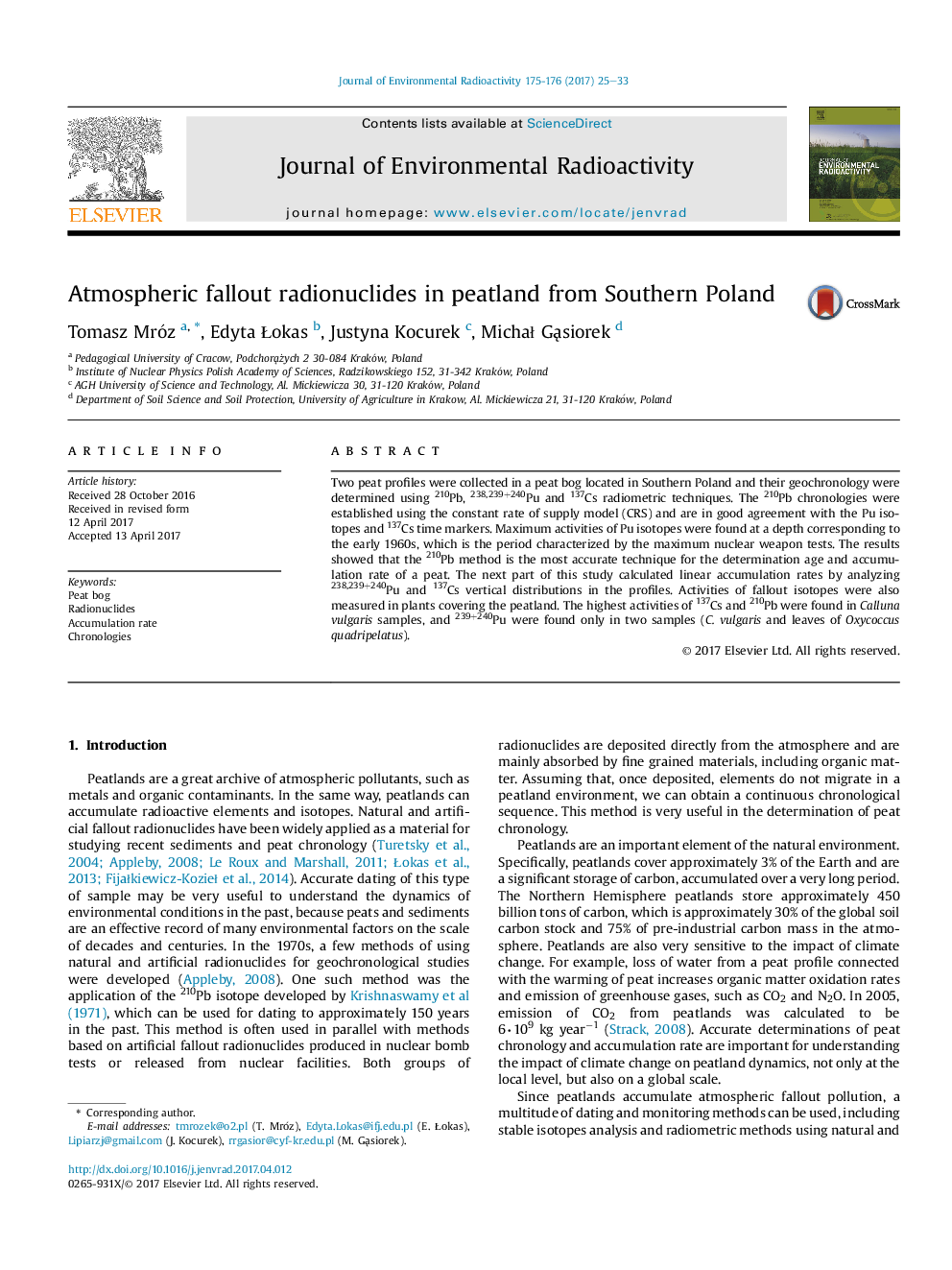| Article ID | Journal | Published Year | Pages | File Type |
|---|---|---|---|---|
| 5477557 | Journal of Environmental Radioactivity | 2017 | 9 Pages |
Abstract
Two peat profiles were collected in a peat bog located in Southern Poland and their geochronology were determined using 210Pb, 238,239+240Pu and 137Cs radiometric techniques. The 210Pb chronologies were established using the constant rate of supply model (CRS) and are in good agreement with the Pu isotopes and 137Cs time markers. Maximum activities of Pu isotopes were found at a depth corresponding to the early 1960s, which is the period characterized by the maximum nuclear weapon tests. The results showed that the 210Pb method is the most accurate technique for the determination age and accumulation rate of a peat. The next part of this study calculated linear accumulation rates by analyzing 238,239+240Pu and 137Cs vertical distributions in the profiles. Activities of fallout isotopes were also measured in plants covering the peatland. The highest activities of 137Cs and 210Pb were found in Calluna vulgaris samples, and 239+240Pu were found only in two samples (C. vulgaris and leaves of Oxycoccus quadripelatus).
Related Topics
Physical Sciences and Engineering
Energy
Nuclear Energy and Engineering
Authors
Tomasz Mróz, Edyta Åokas, Justyna Kocurek, MichaÅ GÄ
siorek,
